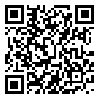Volume 10, Issue 4 (Winter 2007)
Physiol Pharmacol 2007, 10(4): 291-302 |
Back to browse issues page
Download citation:
BibTeX | RIS | EndNote | Medlars | ProCite | Reference Manager | RefWorks
Send citation to:



BibTeX | RIS | EndNote | Medlars | ProCite | Reference Manager | RefWorks
Send citation to:
Fereidoni M, Javan M, Semnanian S, Ahmadiani A. Hypothalamus Pituitary Adrenal axis and stimulatory G proteins signaling role in nociceptive changes induced by forced swim stress . Physiol Pharmacol 2007; 10 (4) :291-302
URL: http://ppj.phypha.ir/article-1-288-en.html
URL: http://ppj.phypha.ir/article-1-288-en.html
Abstract: (16253 Views)
Introduction: Different mechanisms are involved in stress induced analgesia (SIA) and
hyperalgesia (SIH). Repeated stress induces development of tolerance to SIA. The role of
HPA axis and Gs signaling pathway in these effects are investigated in the current study.
Methods: Forced swim stress (5 min/day) in water (20±1 ºC) was employed to adult
male Wistar rats (200-250 g). The nociceptive threshold was assessed using tail flick test.
Adrenalectomized (ADX) rats were also subjected to stress tests. Oseltamivir was used to
block Gs signaling pathway.
Results: Stress produced analgesia for 1 h (p<0.001) and hyperalgesia during 3-24 h after
its induction (p<0.05). Repeated administration of the stress caused tolerance development
to SIA and increased SIH recorded at 24 h after each session (p<0.001). Oseltamivir
couldn’t reverse the SIH. Dexamethasone produced hyperalgesia from 30 min (p<0.001) to
24 h after its administration (p<0.01). Repeated injection of dexamethasone increased the
hyperalgesia recorded at 24 h after treatment (p<0.001). In ADX animals SIA continued for
24 h (p<0.01). Adrenalectomy attenuated the chronic stress-induced SIA tolerance and
eliminated SIH.
Conclusion: SIH is suggested to be related to adrenal activity which also has a role in
SIA tolerance. Upper parts of HPA axis seems to be responsible for SIA. Oseltamivir could
not reverse the SIH. Therefore, the Gs signaling pathway activation by opioid system may
not be responsible for SIH.
Type of Manuscript: Experimental research article |
| Rights and permissions | |
 |
This work is licensed under a Creative Commons Attribution-NonCommercial 4.0 International License. |





